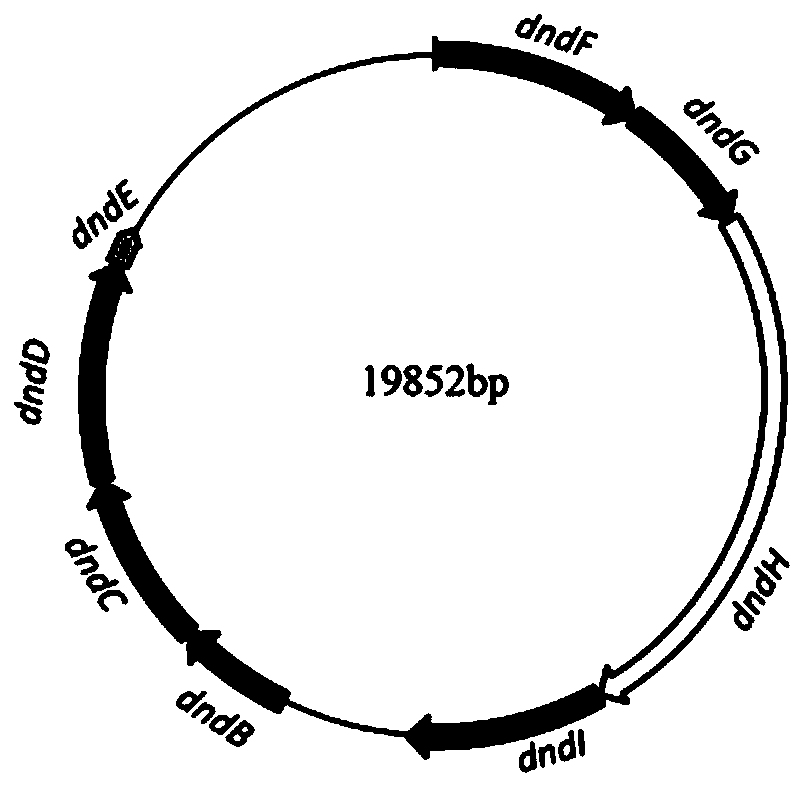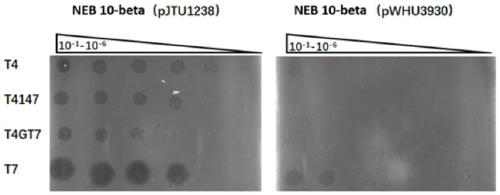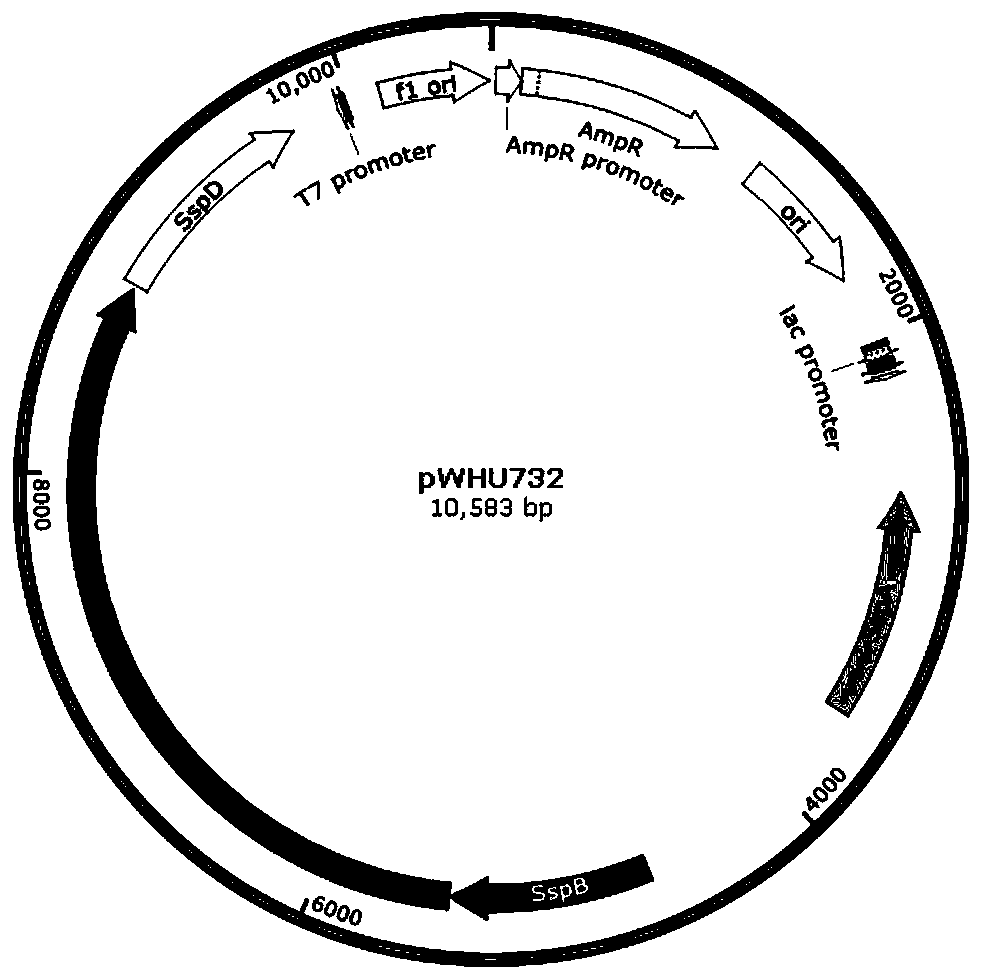Antiphagin and artiviral system based on DNA sulfur phosphorus acylation modification
A phosphorothioylation and anti-phage technology, applied in the field of anti-phage and anti-virus systems, can solve the problems of S.enterica double-stranded DNA damage, cell structure changes, growth defects, etc.
- Summary
- Abstract
- Description
- Claims
- Application Information
AI Technical Summary
Problems solved by technology
Method used
Image
Examples
Embodiment 1
[0032] Example 1: Anti-phage and anti-viral gene clusters based on DNA phosphorothioylation modification.
[0033] There are two types of DNA phosphorothioylation modification. One is the double-stranded phosphorothioylation modification guided by the dnd gene cluster. Taking Salmonella enterica serovar Cerro 87 as an example, there is dndFGHI around the modified gene cluster dndABCDE. Identification of whether dndABCDE-dndFGHI contributes to phage resistance. The other is the single-strand phosphorothioylation modification mediated by the sspABCD gene cluster. Taking Vibrio cyclitrophicus FF75 as an example, a gene with nuclease activity was found downstream of sspABCD, and it was named sspE. We also found a modifier gene cluster of dndCDEA in archaea, and found a homologous gene of the type III restriction subunit in the region adjacent to the modifier gene cluster, which is a gene related to the defense of DNA phosphorothioation modification, and its surrounding The gene w...
Embodiment 2
[0034] Example 2: Construction of plasmid pWHU3930 containing dndBCDEFGHI
[0035] The plasmid pJTU1238 containing dndBCDE was digested by SacI and SpeI, and the linear vector DNA containing SacI and SpeI cohesive ends was recovered, using 5'-AAAGGGAACAAAAGCTGGAGCTCAAAGGTCGGTATTCCGA-3' and 5'-ACATGCACCGAAATAGCATGCTCTTTTTCTTGCTTA-3' as primers, and Salmonella enterica serovarCerro 87 Genomic DNA of Salmonella enterica serovar Cerro 87 was used as a template to obtain a fragment 1 with a length of 5.6 kb by PCR, using 5'-TAAGCAAGAAAAAGAGCATGCTATTTCGGTGCATGT-3' and 5'-AACCGGCCGCAGATCCACTAGTAATAATATGGCACCATG-3' as primers, and using the genomic DNA of Salmonella enterica serovar Cerro 87 as a template, obtained by PCR Fragment 2 with a length of 4.6 kb. By Gibson splicing, fragment 1, fragment 2 and the linear vector DNA digested by SacI and SpeI were ligated to obtain the recombinant plasmid pWHU3930( figure 1 ) containing the dndBCDEFGHI gene cluster from Salmonella enterica se...
Embodiment 3
[0036] Example 3: Plasmid pWHU3930 containing dndBCDEFGHI confers host resistance to phage
[0037] The pWHU3930 was introduced into NEB 10-beta, and NEB 10-beta (pWHU3930) was obtained through ampicillin resistance selection, and pJTU1238 was introduced into NEB 10-beta, and NEB 10-beta (pJTU1238) was obtained through ampicillin resistance selection. NEB 10-beta (pJTU1238) and NEB 10-beta (pWHU3930) were cultured overnight at 28°C. The next day, expand into 5 mL LB medium at a volume of 1:100, and culture at 28 degrees until the OD600 is 0.8. Take 400 μL of the bacterial solution, prepare a plate by the double-layer plate method, dilute the phage step by step, and spot the plate. Invert the plate and place it in a 28°C incubator. The next day, the infection status of phages in NEB 10-beta (pWHU3930) and NEB 10-beta (pJTU1238) was observed. The result is as figure 2 , the bacteria containing the dndBCDEFGHI system have obvious resistance to bacteriophage T7, T4 and their ...
PUM
 Login to View More
Login to View More Abstract
Description
Claims
Application Information
 Login to View More
Login to View More - R&D
- Intellectual Property
- Life Sciences
- Materials
- Tech Scout
- Unparalleled Data Quality
- Higher Quality Content
- 60% Fewer Hallucinations
Browse by: Latest US Patents, China's latest patents, Technical Efficacy Thesaurus, Application Domain, Technology Topic, Popular Technical Reports.
© 2025 PatSnap. All rights reserved.Legal|Privacy policy|Modern Slavery Act Transparency Statement|Sitemap|About US| Contact US: help@patsnap.com



